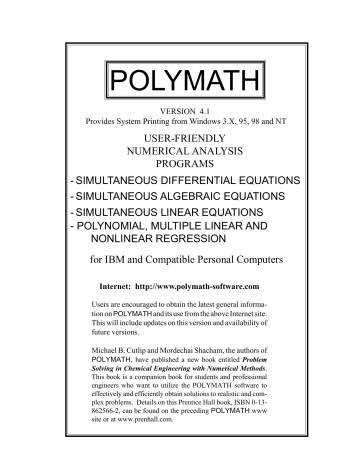

Hexadecimal values are also used in colour representations, as illustrated in our example code. In this case, hexadecimal values give a clearer idea of how the result is obtained, such as 0xf0 | 0x33 becomes 0xf3. Perhaps the value to be assigned is the result of a binary OR. There are only a few things I want to point out.Īny integer variable type can be assigned a hexadecimal value instead of plain vanilla numbers. It saves a lot of explanation in the post too. There’s quite a bit of commenting, so you can follow better while reading the code. for more formats, search MSDN for "Custom DateTime Format Strings" String flowerlist = new string ", priceofcomputer) Ĭonsole.WriteLine(timenow.ToString( "dd/MM/yyyy HH:mm:ss")) Ĭonsole.WriteLine(timenow.ToString( "yyyy-MM-ddTHH:mm:sszzz")) Ĭonsole.WriteLine(timenow.ToString( "dddd, MM/dd/yyyy")) Ĭonsole.WriteLine(timenow.ToString( "d MMM yyyy"))
#Polymath software decimal places code#
So how do we read input and write output? Let’s look at some source code first.

Other classes dealing with data streams include NetworkStream (working with data across networks) and MemoryStream (working with data within computer memory). NET framework views file IO as a form of data stream. I personally find the StreamReader and StreamWriter classes to be easy to use for file IO. The most common communication methods is through file input/output or file IO as they’re usually referred to. It also makes it easier for programs to talk to each other, since input and output of programs are what they communicate with. If your program’s supposed to write out integers, it better write out only integers. What it means is that your program should be lenient with the input it receives, to assume that all sorts of rubbish data can (and will be) fed to your program, and it’s your duty to make sure your program can handle it.īUT, your program must adhere strictly to the output format it’s supposed to produce. There’s a saying in programming that goes something like thisīe liberal with what you receive.


 0 kommentar(er)
0 kommentar(er)
